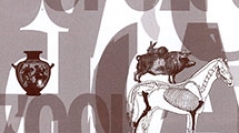

 Anthropozoologica
49 (2) - Pages 281-295
Anthropozoologica
49 (2) - Pages 281-295This paper presents camel remains identified in Roman sites in Serbia. The remains originate from Viminacium, the capital of Roman province Moesia, and from the 3rd-4th century villa rustica in the locality of Vranj, in the province of Pannonia. In Viminacium, they were found in a 4th century dump, near the Eastern necropolis of the city, and in the 4th century layers in the area of the amphitheatre. In order to conclude whether these bones belonged to Camelus dromedarius or Camelus bactrianus, measurements and morphology of our specimens were compared with camel bones found at other Roman sites, and with modern specimens. We have identified two-humped camels and also hybrid individuals. The role of the camels is also discussed here: whether they were used in public games (ludi), for military purposes, or as transportation animals. As a conclusion, we acknowledge that camels were not rare animals in Roman provinces as it was considered before.
Camels, Bactrians, camel hybrids, Roman archaeozoology, Viminacium, Sirmium, Vranj, amphitheatre, villa rustica